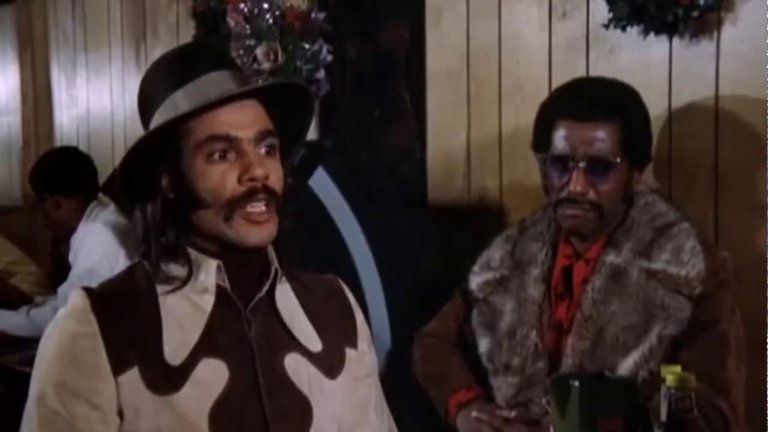Film Review: Super Fly (1972)

The drug trade has long been a staple of cinema, but most narratives position viewers as outsiders—observing addicts’ desperation or law enforcement’s crusades—rather than immersing them in the perspective of the dealers themselves. Super Fly, Gordon Parks Jr.’s 1972 blaxploitation classic, bucks this trend with unflinching audacity. Unlike films that romanticise or vilify addiction, Super Fly delves into the calculating mind of a cocaine dealer, framing the drug trade as both a lucrative game and a precarious dance with self-destruction. Its unapologetic portrayal of Harlem’s underworld made it a defining entry in the blaxploitation genre, even as its moral ambiguity sparked controversy.
The film’s protagonist, Youngblood Priest (Ron O’Neal), is a charismatic cocaine kingpin whose polished demeanor belies the risks of his trade. Advised by his retired mentor, Scatter (Julius Harris), Priest has built a “small empire” of luxury—complete with a white girlfriend (Polly Niles), a spacious apartment, and a loyal clientele. Yet his opulent life is shadowed by paranoia: the constant threat of police raids, violent junkies, and the gnawing guilt of exploiting his community. Determined to retire and settle down with his long-term girlfriend Georgia (Sheila Frazier), Priest plans one final score—a thirty-kilogram cocaine deal—to secure his future. However, the transaction unravels when he discovers his supplier is corrupt police commissioner Riordan (Sig Shore), whose schemes force Priest to choose between betrayal and self-preservation.
Super Fly emerged from a unique creative lineage. Directed by Gordon Parks Jr., the son of pioneering filmmaker Gordon Parks (director of Shaft, which ignited the blaxploitation trend), the project was financed by Parks Sr. and Shore. This familial connection and modest budget—evident in its gritty, guerrilla-style shooting in Harlem’s streets—lent the film an authenticity often missing from studio-backed blaxploitation entries. With a predominantly Black crew and a focus on authentic locations, Parks Jr. crafted a raw, lived-in vision of urban life. Yet the film’s low-budget constraints occasionally reveal themselves in awkward pacing and directorial shortcomings.
Parks Jr.’s inexperience is most glaring in the film’s structural hiccups. Lengthy scenes of Harlem pedestrians or photographic montages feel like padding, stretching the runtime to feature length without adding narrative depth. These sequences, while visually engaging, occasionally disrupt the film’s taut momentum, leaving the impression of a project constrained by budget rather than artistic vision.
The acting is similarly uneven. Ron O’Neal delivers a tour-de-force performance as Youngblood Priest, embodying the character’s slick confidence and existential weariness with effortless charm. His Priest is a man who knows the cost of his lifestyle but cannot escape its allure—a duality that makes him both compelling and tragic. However, the supporting cast struggles to match his energy. Julius Harris’s Scatter feels underwritten, reduced to a paternal cipher rather than a fully realised mentor. Carl Lee, as Priest’s anxious partner Eddie, injects moments of tension but lacks the gravitas needed to elevate his role. The weakest link is Sig Shore’s Commissioner Riordan, whose hammy villainy leans too heavily on blaxploitation tropes of corrupt authority.
Despite these flaws, Phillip Fenty’s script occasionally rises above genre conventions. The film’s most memorable scenes subvert expectations, particularly Priest’s confrontation with Black Power militants who accuse him of exploiting his community. This exchange—tense, ideological, and refreshingly unscripted-feeling—adds moral complexity to Priest’s choices. Similarly, the climax’s resolution, in which Priest outsmarts Riordan through wit rather than brute force, rejects the genre’s reliance on shootouts for a smarter, more nuanced victory. These moments hint at Fenty’s ability to balance genre thrills with thematic depth.
What truly elevates Super Fly is Curtis Mayfield’s iconic soundtrack. The soulful, socially conscious score—anchored by the title track “Super Fly” and the haunting “Freddie’s Dead”—becomes a character in its own right, amplifying the film’s themes of fleeting glory and inevitable downfall. The soundtrack’s success (it outsold the film itself) cemented its legacy, ensuring the music outlived the controversies around its source material.
Super Fly’s reception was polarised. Critics and activists accused it of glorifying drug dealing, yet its unflinching portrayal of systemic neglect and economic desperation resonated with audiences. It became a commercial success, capitalising on blaxploitation’s mainstream appeal while quietly challenging its own genre’s moral boundaries. A sequel, Super Fly T.N.T. (1973), directed by O’Neal, proved less impactful, and the 1990 remake Return of Super Fly (starring Nathan Purdee) faded into obscurity. A 2018 reboot starring Trevor Jackson fared even worse, underscoring the original’s singular cultural moment.
RATING: 5/10 (++)
Blog in Croatian https://draxblog.com
Blog in English https://draxreview.wordpress.com/
InLeo blog https://inleo.io/@drax.leo
Hiveonboard: https://hiveonboard.com?ref=drax
InLeo: https://inleo.io/signup?referral=drax.leo
Rising Star game: https://www.risingstargame.com?referrer=drax
1Inch: https://1inch.exchange/#/r/0x83823d8CCB74F828148258BB4457642124b1328e
BTC donations: 1EWxiMiP6iiG9rger3NuUSd6HByaxQWafG
ETH donations: 0xB305F144323b99e6f8b1d66f5D7DE78B498C32A7
BCH donations: qpvxw0jax79lhmvlgcldkzpqanf03r9cjv8y6gtmk9
Posted Using INLEO